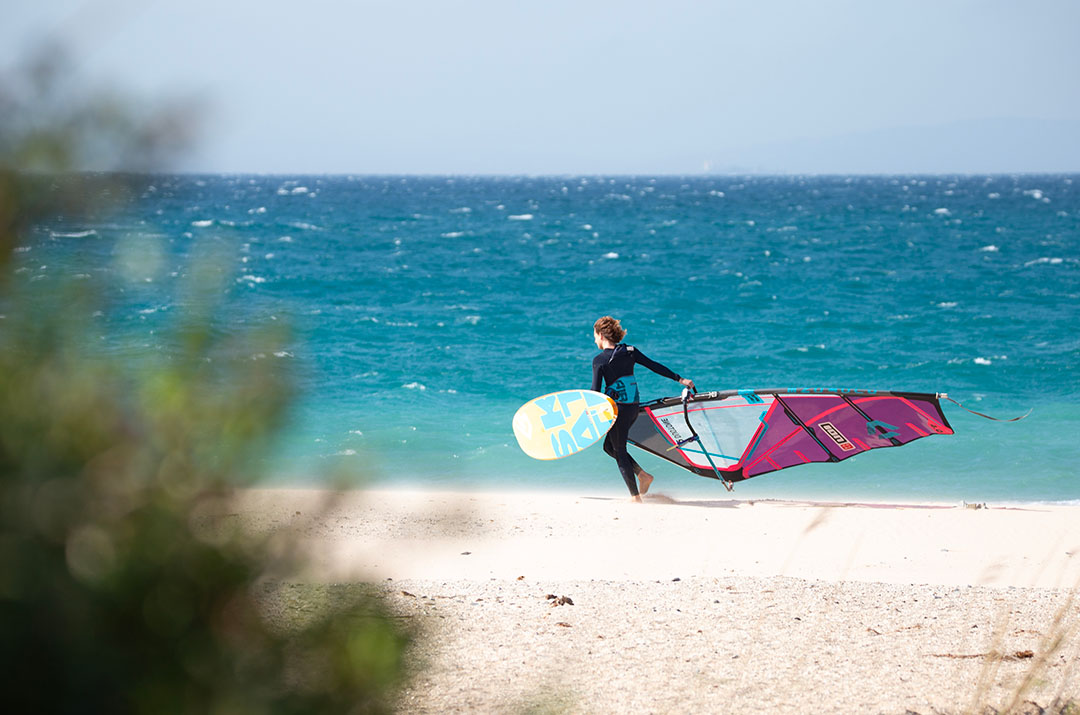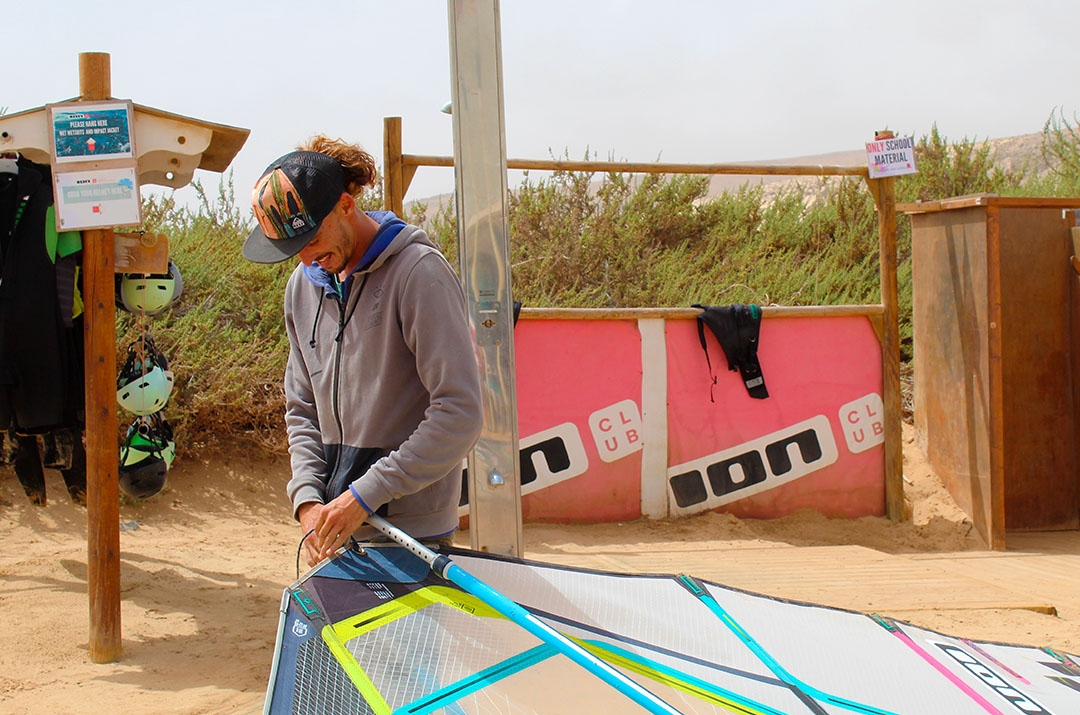How to choose the size of your windsurfing sail?
Every windsurfing session requires attention to the weather conditions, especially the observation of the sky, the water and the wind strength, direction and condition. Depending on wind strength, the size of the sail you use for your session of the day will be a crucial choice for maximising your sailing.
A beginner windsurfer will not necessarily sail with the same size sail as an experienced windsurfer, and a slalom surfer will not have the same size sail as a waverider. There are several types of sails, both in terms of technology and surface area, which can range from about 1.5 for children to 12 m² for sailing in ultra light winds. However, the most common range of use is between 3.7 and 7.5 m².

How do I manage my windsurfing sail quiver?
First of all, never neglect your own safety on the water and adapt the size of your sail to your level, and do not overestimate yourself! The higher your level, the more you can sail in strong winds above 25-30 knots, and why not in the waves, or even some looping once you are confident!
For beginners, a freeride sail that is versatile, not too powerful and easy to use is a good investment. Adapt the sail area to your weight and physique. It is obvious that a 60 kilo person does not sail with the same sail as a 90 kilo windsurfer in similar weather conditions.
It is strongly recommended to go out in winds of around 15-20 knots when you have some knowledge but are still a beginner. Enough to move forward, to glide over the water but not too strong either so that you don’t have to struggle too much.
For a 50 kg rider, go for a 3.7 m² sail, for someone of 75 kg go for 5.0 m² and 90 kg for a single sail of 5.7 m² more or less. There is no point in being over ambitious at the beginning, just enjoy yourself and progress with patience. With perseverance and desire, your level will evolve in the right direction, and it will then be possible to expand your windsurfing quiver with two or even three sails.
The most common sizes are 3.5 to 4.7 m² for small sails, 5.0 to 6.0 m² for medium sails, and 6.3 to 7.5 m² for large sails.
Before buying equipment, you should also check the local weather conditions, as the wind, sea and water conditions will vary from region to region.
For more experienced windsurfers it goes without saying that sailing with a slightly bigger and more powerful sail than a beginner or intermediate level allows them to go faster and jump higher, and it´s called being overpowered on purpose!
Gradually as you progress, the desire to sail in all wind conditions will grow, whether in 18 knot or 40 knot winds, you will need, again, at least two or even three sails. That’s not all, in addition to choosing the right sail size, you also need to think about the programme, i.e. conditions such as bump and jump, waves, slalom or flat water. A wave sail is different from a freeride sail. The shape, the number of battens, the profile, the weight, there are many parameters to consider.
Every windsurfing session requires attention to the weather conditions, especially the observation of the sky, the water and the wind strength, direction and condition.
Which windsurfing sail for which type of sailing?
Whether you are addicted to waves, freestyle, speed or more common conditions such as freeride (light chop), the shape of the windsurf sail will not be the same because the expected sailing will be different. A 5.0 m² wave sail, for example, does not have the same configuration and technicality as a 5.0 m² slalom sail which is heavier.
A beginner windsurfer sails on a freeride area or flat water to be comfortable. A sail that is quick to plane and easy to uphaul is the perfect model, so opt for a forgiving and versatile freeride sail. There is no point in taking a cambered sail to start windsurfing as it is profiled to catch a lot of wind. A wave sail is also good for starting out, although it may lack some power in light wind.
The freestyler needs power in his sail. The sail must be very powerful and respond nervously in order to jump and perform tricks low in the water. It is more maneuverable than any other type of sail, but it is more fragile and lighter because it is less reinforced.
A windsurfing waverider will choose a wave sail with four battens most of the time. These sails are more solid and more neutral in the surf, i.e. they pull less in the arms since we use the power of the wave to surf by going downwind once on the wave.
The need for speed means that race enthusiasts use seven or eight batten camber sails in order to head upwind as much as possible, with a maximum speed in the open sea, and to go downwind at very high speed. The slalom sailor will tend to use a size larger than a normal sail. This helps them to navigate in a sometimes irregular wind and thus to get through the gusts.
Finally, in order to fly above the water, windfoilers often choose to sail with a smaller sail even though they are usually in light winds.

What is the ideal sail size for windsurfing?
As you can see, a lot of parameters have to be taken into account before going windsurfing. Body weight and level of the windsurfer, wind strength and its consistency – regular or irregular -, the condition of the water, the planned programme – freeride, freestyle, waves, speed, foil – all of these factors are assessed for a perfect windsurfing session.
The shape and size of the sail will be a major common factor for a beginner to an expert windsurfer. Safety and alertness are paramount to comfortable sailing. Don’t choose a sail that is too small or too big, read the nature, it will give back to you and offer you magical moments on the water!
